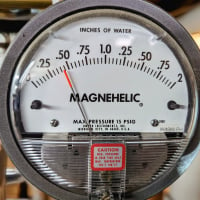Best Of
Re: basement heat
Be careful about return ducts in the basement if you have a gas or oil furnace requiring combustion air from that space
Re: House heats up but thermostat is turned off AND thermostat's battery is dead
Left - Relay de-energized, contacts open.
Right - Relay energized contacts closed. Pressure from an ill placed wire could push the armature (the black plastic part) and erroneously close a contact.
Re: Is this a house trap?
As others have wisely suggested...get the A Team in there...These guys are jerking you around...Mad Dog
Re: Is this a house trap?
risers to the surface are usually cleanouts to clean the line without dragging a machine in the basement or abandoned downspout connections.
Re: Is this a house trap?
That's the next step, but they are telling me they won't do it if I don't remove the trap. That's why I'm trying to remove the trap. I guess I have some more digging to do. Or do you think there isn't a trap?
Re: Replacement Gas Boiler Size
Your Baseboards are only capable of 58k BTUs output. So yes, you’re present boiler is oversized.
The issue of loosing water is very serious and needs to be addressed. Your lack of heat in some areas is probably related to it.
I have to respectfully disagree with the comment about your present boiler being 85% efficient; it’s probably closer to70%. And a new mod/con operate In condensing mode the majority of the heating season when the out door reset is properly setup. You only need 180* water at design temperature (the coldest night of the year).
 Ironman
Ironman
Re: Is this a house trap?
Very true.
But it's open to soaking wet mud. That doesn't pass gas too well.
Dried up and cracked clay, or sand does.
Hopefully, he's going to listen to you or Mad Dog and call someone else. I thought a vent pipe out in the yard was mentioned, wouldn't that be where a trap would be located under these conditions? I understand it shouldn't need to be removed, but, since he's digging……..
 ChrisJ
ChrisJ
Re: Replacement Gas Boiler Size
Why 95%?
You'll only see that when running low water temperatures. Less than 140°F. Your emitters are rated for 180° water.
Your old boiler is probably 85% efficient and lasted over 40 years. The highly efficient won't last 1/2 that!
 pecmsg
pecmsg
Re: Is this a house trap?
With all they currently have going on, why do you want them to do a radon test?
Even if it is a concern, with the dirt that saturated with water radon levels would likely be low especially if that's clay.
I wouldn't open up another can of worms until the problem at hand is sorted my self.
 ChrisJ
ChrisJ

